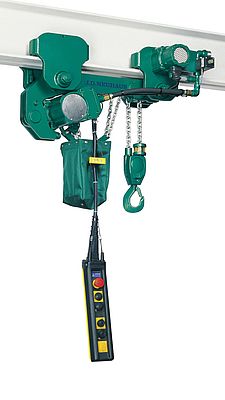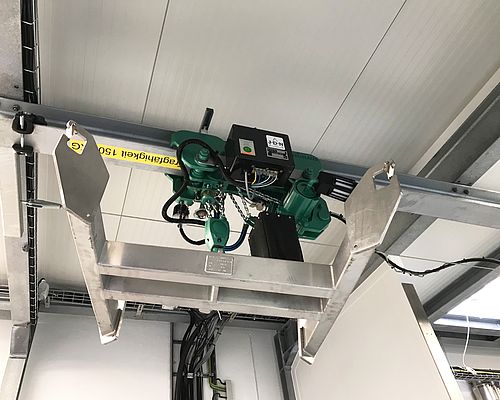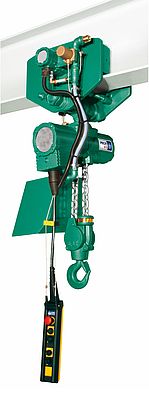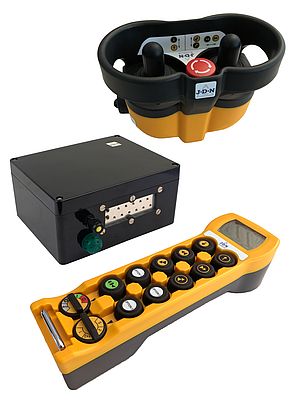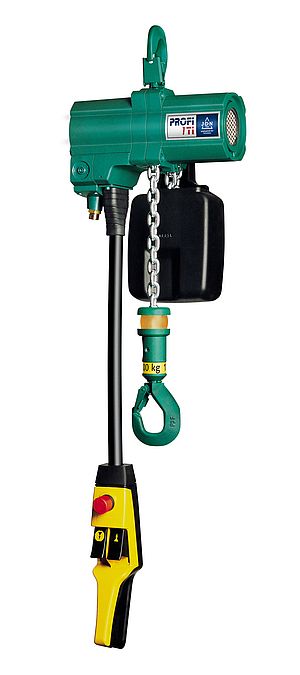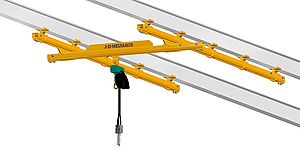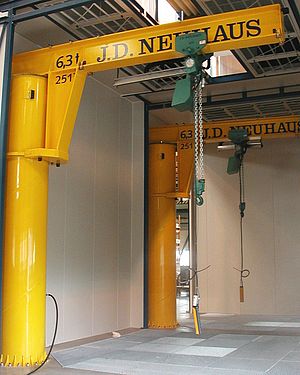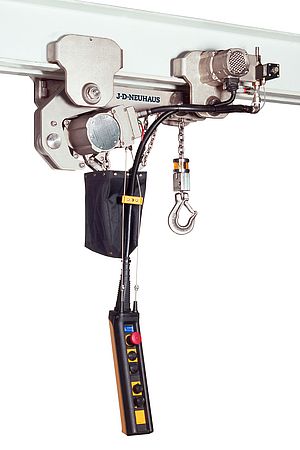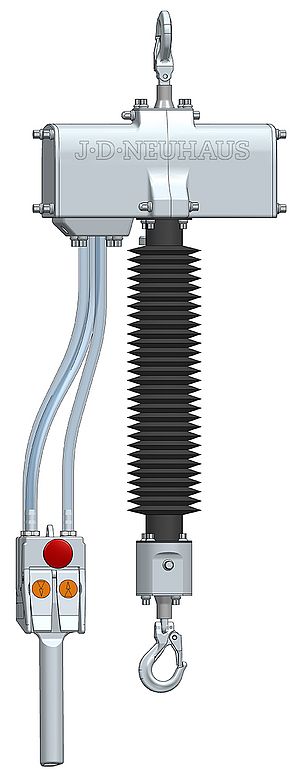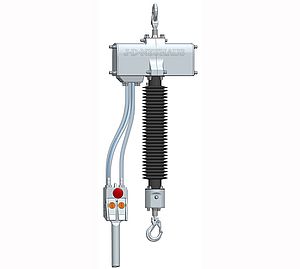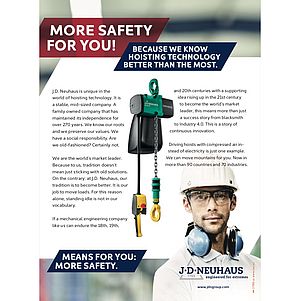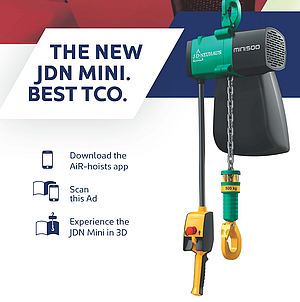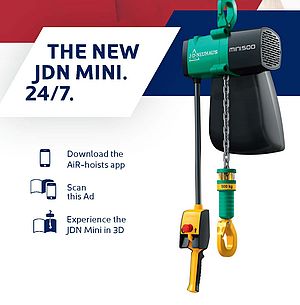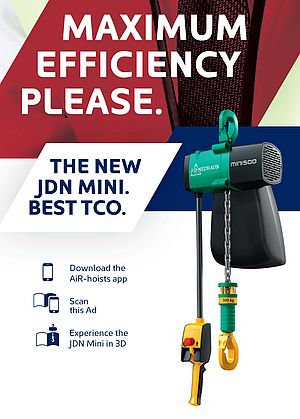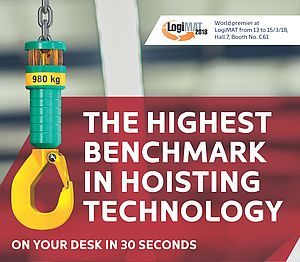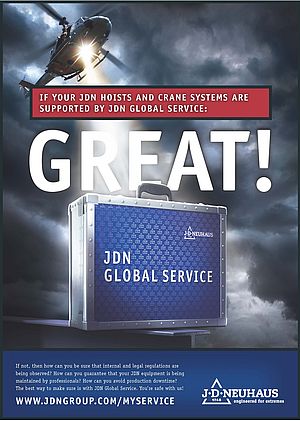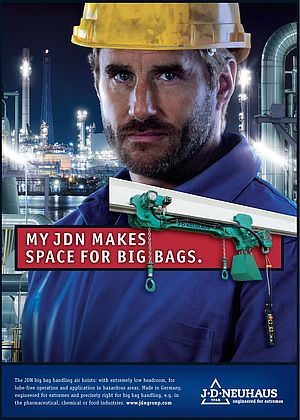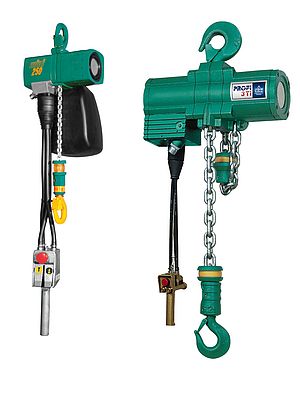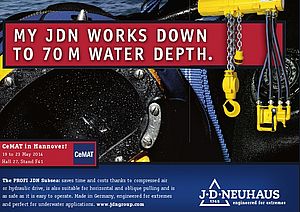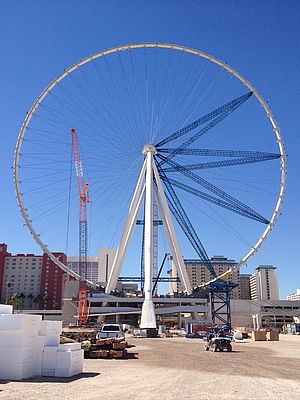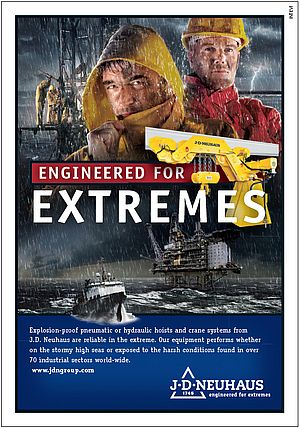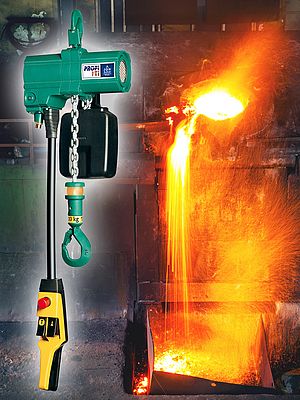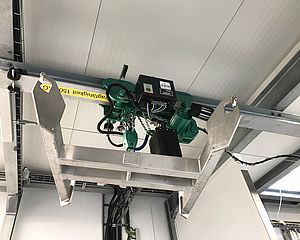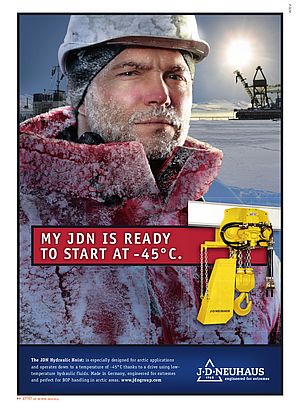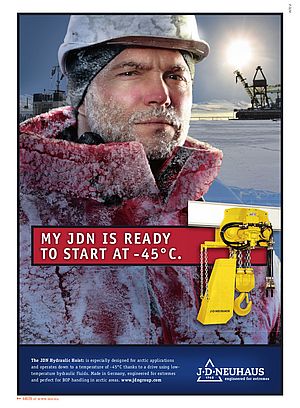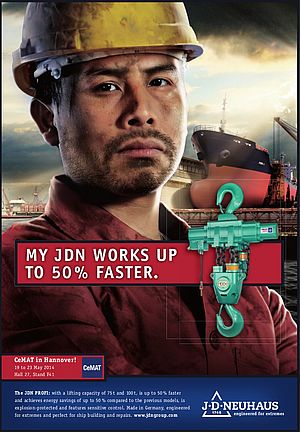J.D. Neuhaus offers three kinds of hoist trolleys, designed to facilitate the lateral motion of suspended loads: manual trolleys (LN) for pushing or pulling by hand; reel chain trolleys (LH) for moving by unwinding the reel chain; and motorised trolleys (LM) powered by an air motor. All trolleys are customizable, and they can reach capacities with the benefit of 8-wheel and even 16-wheel systems.
Hoist trolleys with explosion protection
Importantly, for suitability in hazardous areas, all JDN trolleys offer explosion protection to Ex II 2 GD IIA T4/II 3 GD IIB T4 classifications. Higher classifications are available on request. For instance, with even further increased spark protection for explosion group IIC, the trolleys incorporate running wheels and travel gearing manufactured in bronze for an impressive EX II 2 GD IIC T4 rating. Anti-climb and anti-drop devices are also included as standard. JDN trolleys are designed to tackle all sorts of unique applications which can include curved beams.
Hoist trolleys remotely controlled
All hoists and trolleys can be remotely controlled by the recently introduced JDN radio control systems, offering ease of use and convenience. The remote controls are an effective alternative to where long control hoses are required and for use in hard-to-reach areas, providing simultaneous control of multiple hoists and trolleys. Comprising a transmitter and receiver, the JDN-RC (Remote Control) is available for both new and retrofit applications.
Hoist trolleys with rack and pinion drive for safe load handling
Options for JDN trolleys include a rack and pinion drive for safe load handling on offshore platforms and seafaring vessels, a spark-resistant package and offshore paint to suit rigorous operating environments. Energy can be fed by various systems, including energy chain, C-shaped rail, square rail or spiral hose, to best suit application requirements. JDN also offers a special-purpose series of low-headroom trolleys, meaning tight load placements can still traverse economically utilising JDN’s special low-headroom design.


